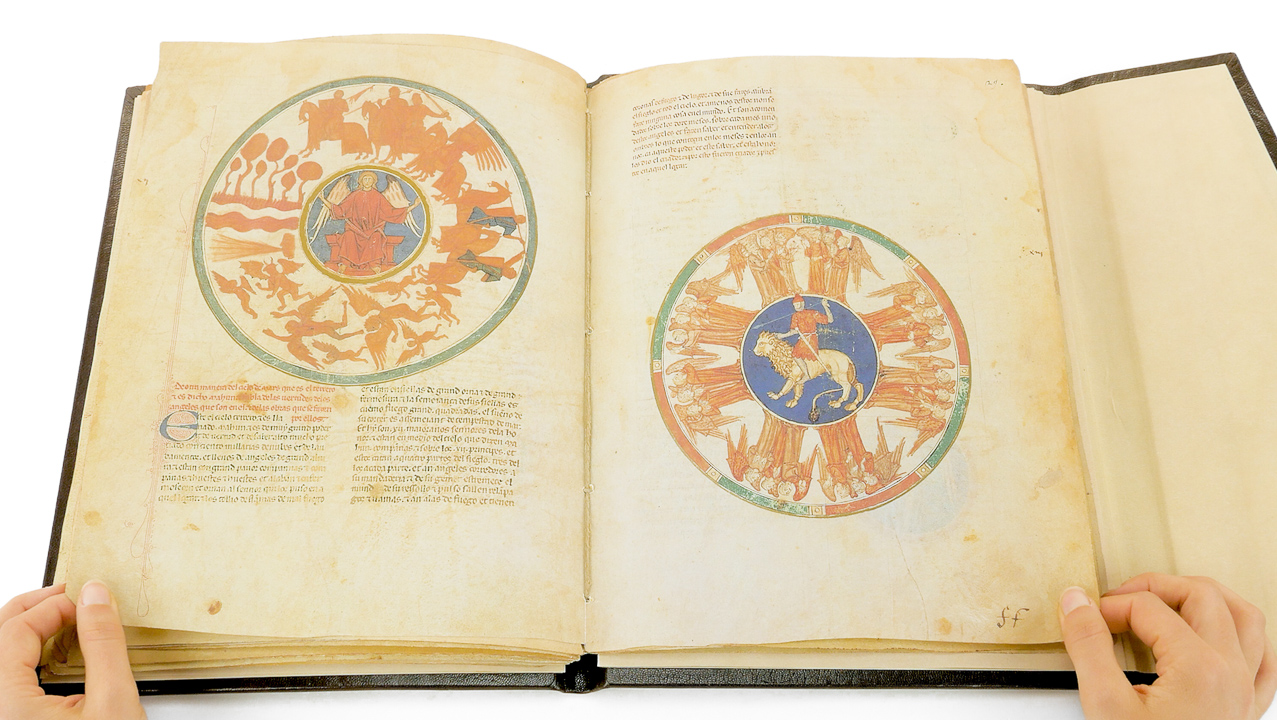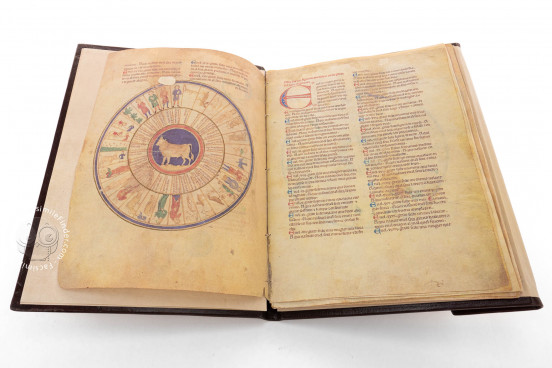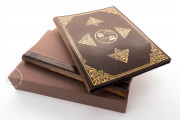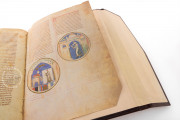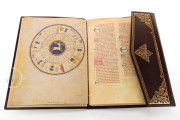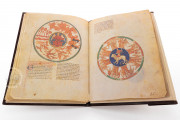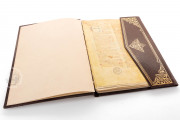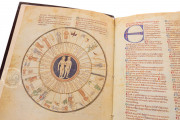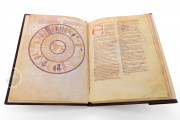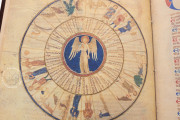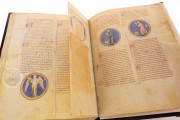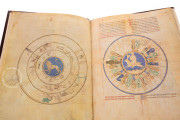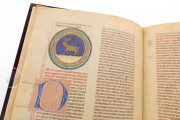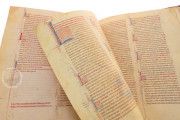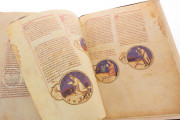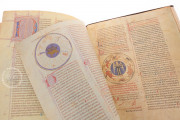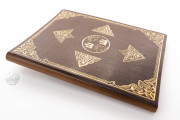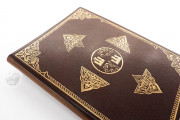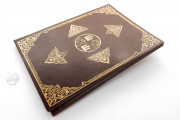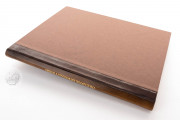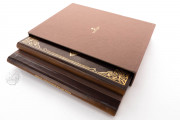The Book of Astral Magic of Alfonso X is a fragmentary Spanish-language illuminated compendium of texts and images that explain the powers of angels, the influences of planetary imagery, and the making of talismans. Made around 1280 at the behest of Alfonso X, "the wise," King of Castile and Leon, it was copied by professional scribes probably working outside the royal court but reflecting the king's interest in harnessing natural history in service of magic and divination. Its seventeen large and twenty-eight small miniatures, all circular in format, depict zodiac signs, planets, and the practice of magic.
Alfonso's book treats image magic (from Arabic tilasm) concerning the planets, divisions (decans) of the zodiacal signs, and divisions (mansions) of the moon's trajectory. The text is based on traditions gleaned from Arabic, Latin, and kabbalistic Hebrew sources.
Importance of the Visual
The scholars at Alfonso's court were not only tasked with translating Arabic works of the occult sciences into Spanish. They transformed the descriptions of the Arabic originals into visual art as a practical guide to practicing the obscure arts. The content was also Christianized: the ambiguous spirits of the source texts are transformed into God's angels.
Magicians Illustrated
In the section on Mercury (fols. 31-36) alone, there is a rare series of nineteen miniatures illustrating the performance of magic, such as the image of a ceremony with the practitioner standing in a magic rectangle and invoking a spirit that appears riding on a winged elephant (fol. 36r).
Babylonian and Indian Roots
Although created de novo, the book's images reflect ancient iconographic conventions. In a section of the text translated from Arabic, one miniature shows various forms of Mars, including representations of the personified planet riding a lion, a motif based on Babylonian tradition (fol. 27r). In a miniature of sacrifices to Mercury in Sagittarius, the personified planet is depicted mounted on a peacock, a motif of Indian origin (fol. 33r).
A Clear Division of Labor
The surviving portions of the manuscript, now in scrambled order, are the work of three scribes, all writing Gothic Textualis. Each writer provided the headings in red and corrected his portion of the text. The scribes were probably professionals working independently and outside the court scriptorium.
Unfinished and Fragmentary
The apportionment of responsibility for different text sections suggests the manuscript was copied with a deadline in mind. The different degrees of finish among the miniatures reinforce this impression. Many compartments of a painting of the mansions of the moon, for example, remain blank (fol. 24v). The pen-flourishing has been exquisitely executed on some of the puzzle initials, while other initials lack flourishes altogether. The contents were already incomplete and in disorder by the fourteenth century.
In the Collections of the Kings of France and the Queen of Sweden
The Book of Astral Magic may have passed from Pedro IV (d. 1387), King of Aragon, to his son Juan I (1350-1396), King of Aragon, and thence to the famous bibliophile John of France (1340-1416), Duke of Berry.
By 1373 the manuscript was certainly in the library of John's brother Charles V (1338-1380), King of France, and possessed by John Plantagenet (1389-1435), Duke of Bedford, in 1425. The manuscript was later owned by Paul Petau (1568-1614) and his son Alexandre (d. 1672), who in 1650 sold hundreds of manuscripts, including Alfonso's book, to Christina (1626-1689), Queen of Sweden, whose extensive library was purchased for the Vatican in 1690.
We have 1 facsimile edition of the manuscript "Book of Astral Magic of Alfonso X": Tratado de astrología y magia facsimile edition, published by Ediciones Grial, 2000
Request Info / Price
